Life Of A Bug Bounty Hunter of elements
LIFE OF A BUG BOUNTY HUNTER
1. Introduction
In today’s digital age, technology and internet usage have rapidly become integral parts of our lives. However, this rapid development have also escalated cybersecurity threats. The complexity of information systems and applications not only exposes new vulnerabilities for cybercriminals to exploit but also makes the detection and mitigation of these vulnerabilities increasingly challenging.
This is where the concept of “Bug Bounty Hunting” gains significance.
|
Bug Bounty Hunting involves cybersecurity experts and white-hat hackers putting effort into identifying and reporting vulnerabilities in companies’ and organizations’ information systems and applications to keep them secure. These hunters identify security loopholes that potential attackers could leverage and report them to the respective companies. In return, companies often provide monetary rewards or other incentives to those who discover these vulnerabilities. Bug Bounty Hunting not only aids in enhancing cybersecurity but also offers participants an opportunity to earn income and refine their skills. As we navigate through the following sections, we will uncover the prerequisites and steps necessary to embark on a Bug Bounty Hunting journey. |
 |
Also this report spotlights notable figures in the Bug Bounty Hunting field, offering glimpses into their accomplishments and contributions.
Ethics and legality hold paramount importance in Bug Bounty Hunting, that is why we delve into the legal responsibilities and compliance measures that hunters must adhere to.
2. Bug Bounty Hunting: An Overview
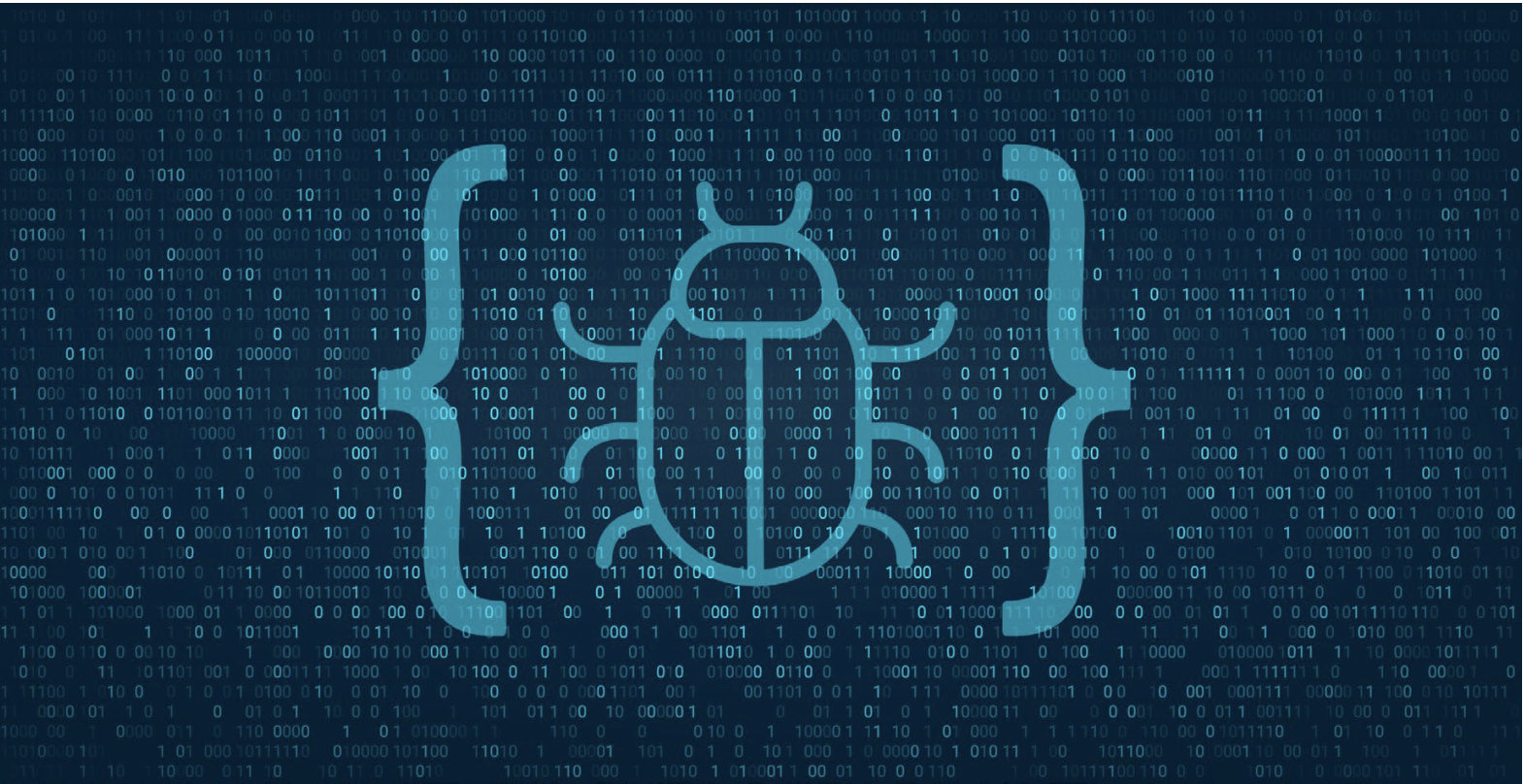 |
Bug Bounty Hunting involves a proactive and collaborative approach to cybersecurity, wherein ethical hackers, commonly known as "Bug Bounty Hunters," team up with organizations to identify potential vulnerabilities within their digital infrastructure. These skilled individuals examine platforms to pinpoint security weaknesses that could be exploited by malicious actors. At its core, Bug Bounty Hunting is a mutually beneficial partnership between ethical hackers and organizations. Bug Bounty Hunters bring their technical powers and unique insights, while organizations provide a platform for these hunters to send their reports and give awards. This collaborative model harnesses the collective expertise of the cybersecurity community to enhance the overall security posture of organizations. |
At its core, Bug Bounty Hunting is a mutually beneficial partnership between ethical hackers and organizations. Bug Bounty Hunters bring their technical powers and unique insights, while organizations provide a platform for these hunters to send their reports and give awards. This collaborative model harnesses the collective expertise of the cybersecurity community to enhance the overall security posture of organizations.
Vulnerabilities that can be found by a bounty hunter encompass a wide spectrum, ranging from coding errors and misconfigurations to logic flaws and authentication vulnerabilities. By identifying these vulnerabilities before they are exploited by malicious hackers, Bug Bounty Hunters contribute significantly to reducing digital risks.
3. Getting Started: Prerequisites and Steps
Entering the world of bug bounty hunting requires a strategic approach, encompassing essential skills and attributes.
3.1. Developing Necessary Skills
Becoming a proficient bug bounty hunter necessitates a foundation of technical skills. Familiarity with a few programming languages like JavaScript and Python is essential for identifying vulnerabilities in web applications. Understanding common security threats, such as Cross-Site Scripting (XSS), IDOR, and SQL Injection, enables hunters to recognize potential vulnerabilities during their assessments. Moreover, proficiency in using security tools enhances the effectiveness of vulnerability identification.
3.2. Enhancing Research Abilities
Effective bug bounty hunting hinges on the ability to gather relevant information about the target system. Open Source Intelligence (OSINT) techniques are invaluable for uncovering details that might lead to vulnerabilities. Learning to identify vulnerable areas, understanding potential attack vectors and staying updated with emerging threats contribute to successful research efforts.
3.3. Polishing Communication Skills
Clear communication is pivotal in the bug bounty ecosystem. Hunters need to articulate their findings accurately when reporting vulnerabilities to organizations. Effective documentation, including detailed explanations and proof of concepts, enables organizations to understand and address the reported issues efficiently. Precise communication prevents misunderstandings and accelerates the resolution process.
3.4. Adhering to Ethical Standards
Ethics are at the core of bug bounty hunting. Adhering to responsible disclosure practices is vital for ensuring that identified vulnerabilities are reported to organizations in a manner that avoids exploitation.
3.5. Cultivating Perseverance
Bug bounty hunting is not without its challenges. Developing a resilient mindset is crucial for navigating rejections, non-responses, and moments of frustration. Cultivating perseverance empowers hunters to persistently refine their skills, learn from failures, and continuously improve their bug hunting strategies.
4. Platforms Utilized by Bug Bounty Hunters
Bug bounty hunters can earn rewards by reporting the vulnerabilities they find on specific platforms. Bug bounty programs enable organizations to assess the security of their software through external observations. Hunters contribute by identifying potential security vulnerabilities, assisting organizations in addressing these issues. These programs depart from traditional security assessments by allowing a diverse range of independent testers to participate in the identification of vulnerabilities.
Commonly Used Bug Bounty Platforms:
HackerOne:
 |
|
Bugcrowd:
 |
|
Synack:
 |
|
Open Bug Bounty:
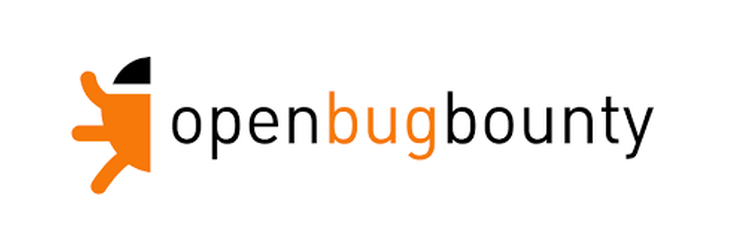 |
|
5. Notable Figures in the Field
The world of bug bounty hunting and security research is populated by individuals who have made significant contributions to enhancing digital security.
 |
Roy CastilloRoy Castillo, a Filipino bug bounty hunter, has expertise in identifying vulnerabilities in websites and applications such as Facebook, Google, and Twitter. Castillo is not only a skilled hunter but also a respected security researcher and speaker, sharing insights with the community. |
 |
Frans RosénFrans Rosén is the founder of Detectify, a security company that helps businesses find and fix vulnerabilities. He is also a renowned bug bounty hunter who has reported vulnerabilities in many high-profile companies. |
|
 |
Nir GoldshlagerNir Goldshlager is a security researcher who has found vulnerabilities in a variety of high-profile targets, including Facebook, Twitter, and Uber. He is also the author of the book "Hacking Web Applications". |
 |
Emily StarkEmily Stark, an American security researcher, co-founded the Open Web Foundation and has made contributions in cryptography and blockchain technology vulnerabilities. Stark also holds a position as a professor at Stanford University, influencing the cybersecurity landscape. |
|
 |
Shubham ShahShubham Shah is an Indian security researcher who is known for his work on finding vulnerabilities in a wide range of software. He is also the founder of the security research company ZeroShell. |
 |
Ryan PickrenRyan Pickren, an American security researcher, has focused on uncovering vulnerabilities in web applications and operating systems. Alongside his bug hunting endeavors, Pickren is an author of security books and a respected speaker. |
|
 |
Jen EasterlyJen Easterly, an American security researcher, currently serves as the Director of the Cybersecurity and Infrastructure Security Agency (CISA). Easterly has dedicated her skills to uncovering vulnerabilities in government systems, bolstering digital security. |
 |
Kevin BeaumontKevin Beaumont is a British security researcher who is known for his work on finding vulnerabilities in government and law enforcement systems. He is also the founder of the security research company Hexis Cyber. |
|
 |
Troy HuntTroy Hunt is an Australian security researcher and entrepreneur. He is best known for creating the website Have I Been Pwned?, which allows users to check if their personal information has been compromised in a data breach. Hunt has also participated in bug bounty programs for a variety of companies, including Google, Facebook, and Microsoft. |
 |
Farah HawaFarah Hawa is a security researcher and bug bounty hunter who has found vulnerabilities in a variety of software products, including Apple iOS and Twitter. She is also a co-founder of the Grace Hopper Girls organization, which promotes women in cybersecurity. |
6. Earnings Potential
Bug bounty programs offer financial incentives to security researchers who discover and report vulnerabilities. These rewards can range from a few hundred dollars to tens of thousands of dollars, depending on the severity and impact of the identified vulnerability.
6.1. Factors Affecting Earnings
Severity of Vulnerability:
The criticality of the vulnerability is a major determinant of the potential reward. High-severity vulnerabilities that could lead to significant security breaches or data leaks generally command higher payouts. For example, remote code execution vulnerabilities typically result in larger rewards than less critical issues.
 |
Impact and Exploitation Potential:Bug bounty hunters consider how easily a vulnerability could be exploited and the potential consequences of exploitation. Vulnerabilities that require complex or multi-step exploitation tend to be rewarded more generously, as they are often harder to identify and fix. Scope and Target:The scope of the bug bounty program and the type of target systems significantly influence earnings. Programs with broader scopes covering multiple platforms or services may provide more opportunities for hunters to discover vulnerabilities, potentially leading to higher earnings. Proof of Concept (PoC):Providing a detailed and effective Proof of Concept (PoC) that demonstrates the vulnerability’s exploitability increases the chances of a higher reward. A well- constructed PoC helps security teams understand the issue’s seriousness and justifies a more substantial payout. |
Quality of Report:
Clear, well-structured, and comprehensive vulnerability reports are more likely to result in higher rewards. Hunters who provide detailed information, including steps to reproduce the issue and potential impact, facilitate the fixing process and are often rewarded accordingly.
Program Reputation and Competition:
High-profile bug bounty programs hosted by reputable organizations tend to offer more attractive payouts. Additionally, the level of competition among hunters for identifying vulnerabilities in such programs can impact individual earnings. More competitive programs might lead to lower rewards per vulnerability due to the higher volume of submissions.
Bounty Platform Policies:
Each bug bounty platform has its own policies and guidelines for determining payouts. Hunters need to be familiar with these policies to understand how rewards are calculated and granted.
6.2. Range of Monthly Earnings
The monthly earnings of bug bounty hunters span a broad spectrum. It's important to note that these figures are estimates and can vary based on individual circumstances.
Low End of Range:
- Novice hunters or those focusing on lower-paying programs might earn around $500 to $1,500 per month.
- This range reflects a starting point for individuals new to bug hunting or who participate occasionally
Mid Range:
- Skilled hunters with moderate experience and participation might earn between $1,500 to $5,000 per month.
- Consistent identification of medium-severity vulnerabilities contributes to this earnings bracket.
High End of Range:
- Experienced hunters with a strong track record in high-paying programs can earn $5,000 to $20,000 or more per month.
- Consistently identifying critical vulnerabilities and successfully participating in competitive programs contribute to higher earnings.
7. Legal Responsibilities and Compliance
7.1. Operating Within Legal Boundaries
Bug bounty hunters play a critical role in enhancing digital security, but their actions can potentially be misconstrued as malicious if not conducted transparently and ethically. Operating within legal boundaries is essential to protect both hunters' interests and the organizations they collaborate with. Violating laws or policies can lead to legal actions, tarnish reputations, and undermine the credibility of the bug bounty community.
Key Considerations:
 |
Terms and Conditions of Bug Bounty Programs: |
|
 |
Authorized Testing: |
|
 |
Responsible Disclosure: |
|
 |
Obtaining Proper Authorization: |
|
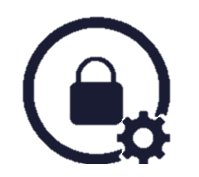 |
Respecting Privacy: |
|
 |
Avoiding Destruction or Disruption: |
|
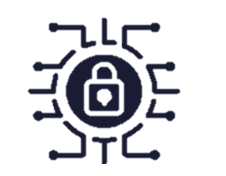 |
Non-Disclosure Agreements (NDAs): |
|
Operating within legal boundaries is crucial for bug bounty hunters to maintain their reputation, ensure their safety from legal action, and uphold the integrity of the bug bounty ecosystem. By striking a balance between uncovering vulnerabilities and acting lawfully, hunters can continue to contribute positively to cybersecurity while mitigating potential legal risks.
7.2. Ethical Reporting
Ethical reporting practices are paramount in ensuring that the impact of bug hunting remains positive and that vulnerabilities are addressed responsibly.
Key Principles of Ethical Reporting:
 |
Responsible Disclosure: |
|
 |
Timely Reporting: |
|
 |
Transparent Communication: |
|
 |
Clear Documentation: |
|
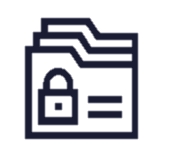 |
Avoid Data Privacy Violations: |
|
 |
Non-Destructive Testing: |
|
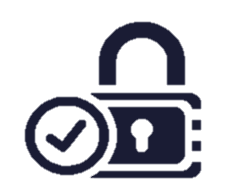 |
Confidentiality and NDAs: |
|
 |
Positive Intent and Professionalism: |
|
 |
Collaborative Approach: |
|
8. Challenges Faced by Bug Bounty Hunters
Bug bounty hunting has gained prominence as a method for identifying vulnerabilities and enhancing digital security. However, the journey of bug bounty hunters is not without its challenges.
8.1. Intense Competition:
The popularity of bug bounty programs has led to a surge in participants, resulting in intense competition. Hunters must contend with numerous skilled peers aiming to identify vulnerabilities quickly. This competitive environment can reduce the availability of high-value vulnerabilities and prompt hunters to invest substantial time and effort.
8.2. Payment Challenges:
Bug bounty hunters occasionally face payment-related issues, such as delayed or inconsistent payouts. Organizations might have varying reward structures, leading to unpredictability in earnings. Disputes over reward amounts can also arise, impacting the motivation and financial stability of hunters.
8.3. Communication Hurdles:
Effective communication is vital in bug bounty hunting, but language barriers, unclear program guidelines, and delayed responses from organizations can hinder the reporting and resolution process. Inadequate feedback can also leave hunters uncertain about the quality of their reports.
8.4. Legal Responsibilities and Compliance:
Operating within legal boundaries while conducting security testing is essential. Hunters must navigate terms and conditions, obtain proper authorization, and ensure responsible disclosure. Missteps can result in legal actions, damaged reputations, or ethical concerns.
8.5. Ethical Dilemmas:
Ethical considerations can arise when identifying vulnerabilities, especially those involving sensitive user data. Hunters must balance their duty to report with the need to protect user privacy and follow ethical disclosure practices. Determining the right course of action can be challenging.
8.6. Burnout and Time Commitment:
The pursuit of bug bounties can be demanding, requiring significant time and effort. The pressure to identify vulnerabilities quickly, coupled with the risk of burnout, can impact the overall well-being of hunters and their long-term participation.
8.7. Scope Limitations:
Bug bounty programs may have narrow scopes, limiting the type of vulnerabilities hunters can identify. This can result in missed opportunities to contribute meaningfully to cybersecurity when specific vulnerabilities fall outside the program's scope.
8.8. Skill Development and Knowledge Gap:Maintaining a high level of technical expertise is crucial for bug bounty hunters. The ever-evolving landscape of cybersecurity requires constant learning and adaptation. Hunters need to stay updated on new attack vectors, programming languages, and technologies to remain effective. 8.9. Vulnerability Duplication:Hunters may independently discover vulnerabilities that have already been reported by others. Duplicate submissions can lead to frustration and the perception of wasted effort. Bug bounty platforms and organizations should implement mechanisms to prevent duplicate submissions. |
 |
8.10. Platform Restrictions:
Bug bounty hunters must adhere to the guidelines and rules set by bug bounty platforms and organizations. These restrictions can impact the testing process, and navigating multiple platforms with varying rules can be challenging.
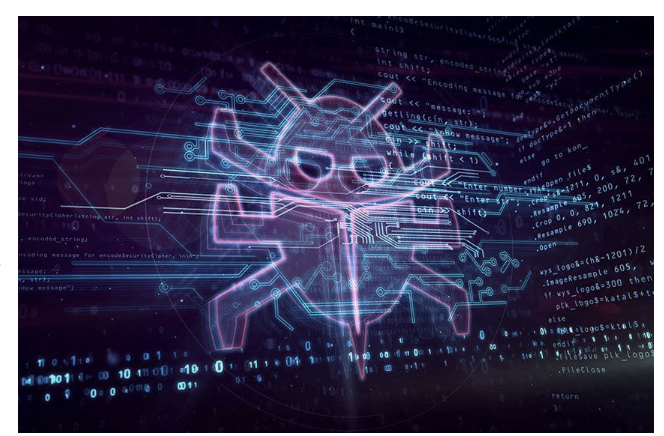 |
8.11. Identifying Zero-Day Vulnerabilities:Identifying zero-day vulnerabilities (previously unknown vulnerabilities) requires extensive research and advanced skills. Hunters must invest significant effort and resources to uncover these elusive vulnerabilities. 8.12. Reporting Complexity:The process of reporting vulnerabilities can be complex, involving detailed documentation, reproduction steps, and technical explanations. Navigating reporting requirements can be challenging, especially for new hunters. |
8.13. Reputation Management:
Hunters' reputation is built on the quality of their reports and their interaction with organizations. Maintaining a positive reputation requires professionalism, effective communication, and responsible disclosure practices.
By acknowledging and addressing these additional challenges, bug bounty hunters, organizations, and platforms can work together to create a more supportive and effective bug bounty ecosystem.
9. Nature of Competition
Bug bounty programs attract a diverse range of participants, including skilled security researchers, enthusiasts, and novices. This diversity contributes to a competitive environment where hunters vie to identify vulnerabilities in digital systems.
9.1. The First-Come, First-Served Principle:
The "First-Come, First-Served" (FCFS) principle is a central concept in many bug bounty programs. It awards the first hunter to identify and report a specific vulnerability. This principle underscores the value of swift identification to prevent malicious exploitation.
Advantages:
- Prompt Reporting: FCFS encourages immediate reporting, ensuring quick mitigation of vulnerabilities.
- Timely Remediation: Early reporting enables organizations to address vulnerabilities before they are exploited.
- Reduced Duplicate Submissions: FCFS minimizes duplicate reports, streamlining the resolution process.
Challenges:
- Pressure to Report Quickly: The FCFS principle may lead to rushed reports, potentially affecting the quality of submissions.
- Missed Details: Hunters might overlook critical aspects when rushing to report vulnerabilities.
- Unpredictable Earnings: Earnings under FCFS can vary, as hunters cannot control the timing of their discoveries.
9.2. Innovation as a Competitive Strategy
Innovation sets hunters apart in a competitive environment. Creative and unconventional testing methodologies allow hunters to identify vulnerabilities that others might miss.
Advantages of Innovation:
- Uncovering Overlooked Vulnerabilities: Innovative approaches can unveil hidden vulnerabilities.
- Higher-Value Discoveries: Creative methods lead to high-severity vulnerabilities and more substantial rewards.
- Enhanced Reputation: Innovative hunters gain recognition as thought leaders.
Challenges of Innovation:
- Experimentation Risks: Innovative strategies may not always yield successful results.
- Skill and Expertise: Implementing innovative methods requires deep technical understanding.
- Learning Curve: Adapting to new methodologies can be challenging.
Competition in bug bounty hunting spurs security researchers to excel and innovate. While the FCFS principle emphasizes early identification, innovation offers hunters a distinct edge. Recognizing the impact of competition on bug bounty hunting is essential for newcomers and veterans alike, fostering a dynamic environment that ultimately strengthens digital security across platforms and application
10.Our Security Reporting Service
 |
Users who register on our app.securityforeveryone.com platform and verify their assets can utilize this service. To enable the service for a specific asset, users need to follow the steps under “Asset Manager -> Manage.” Within this section, there’s a toggle button initially labeled as “Security Reporting Service”. By toggling this button to the “enable” position, users gain access to the service. Once this is done, they can navigate to the “Vulnerability Reporting” tab on the left-hand menu, where they will find “Reported Vulnerabilities” and “Hall of Fame” pages. |
Reported Vulnerabilities: In this section, users can view vulnerabilities that have been discovered and reported by security researchers. These vulnerabilities are listed along with relevant details.
Hall of Fame: This section functions as an honor roll, showcasing the names and social media profiles of researchers who have previously reported vulnerabilities for the asset in question. This section is designed to acknowledge their contributions.
Additionally, on the same page, researchers can find a form where they can report security vulnerabilities. Vulnerabilities reported through this form are subsequently listed on the "Reported Vulnerabilities" page, as mentioned earlier.
To make it easier for users and researchers to find our program, users can simply go to "Asset Manager -> Manage" and click the three dots next to the asset they're interested in. From there, they can choose "Download security.txt." This file, when uploaded to their websites, provides information on how security researchers can report vulnerabilities, leading them to our platform.
For more information, please feel free to contact us. We thank the security researchers for helping us improve our security.
11. Conclusion
 |
In the rapidly evolving landscape of cybersecurity, bug bounty hunting has emerged as a powerful tool for identifying vulnerabilities and enhancing digital defense mechanisms. Throughout this report, we have explored the multifaceted world of bug bounty hunting, from the foundational skills required to the challenges faced and the dynamics of competition. Bug bounty hunting is not merely a pursuit of rewards; it is a journey that demands continuous learning, adaptability, and ethical responsibility. Aspiring bug bounty hunters must develop technical skills, hone their research capabilities, and master effective communication. Moreover, they must uphold ethical standards, ensuring responsible disclosure that safeguards both organizations and users. |
The journey of a bug bounty hunter is not without its challenges. From navigating legal and compliance boundaries to coping with intense competition, these challenges underscore the need for dedication and perseverance. Earnings potential varies widely based on factors like skill level, effort invested, and the severity of identified vulnerabilities. Understanding these intricacies is crucial for managing expectations and making informed decisions.
The competitive nature of bug bounty hunting, driven by the first-come, first-served principle and innovative strategies, encourages hunters to excel and think outside the box. Innovation and creativity are valuable assets in uncovering vulnerabilities that may have gone unnoticed.
As we conclude, it's evident that bug bounty hunting is not just about technical prowess; it's about ethical commitment, community engagement, and the shared goal of creating a safer digital environment. The bug bounty ecosystem thrives on collaboration, knowledge sharing, and the collective mission to protect digital assets from ever-evolving threats. By embracing the challenges, learning from notable figures, and mastering the intricacies of this field, bug bounty hunters contribute significantly to the ever-advancing field of cybersecurity.
12. References
- Cyber Talents. (2023). "Bug Bounty Programs for Beginners" Retrieved from https://cybertalents.com/blog/bug-bounty-programs-for-beginners-everything-you-need-to-know
- Hack the Box. (2022). "What is Bug Bounty Hunting?” Retrieved from https://www.hackthebox.com/blog/what-is-bug-bounty-hunting
- Cybervie. (2023). “What is Bug Bounty? | How to become a Bounty Hunter?” Retrieved from https://www.cybervie.com/blog/bug-bounty/

control security posture
